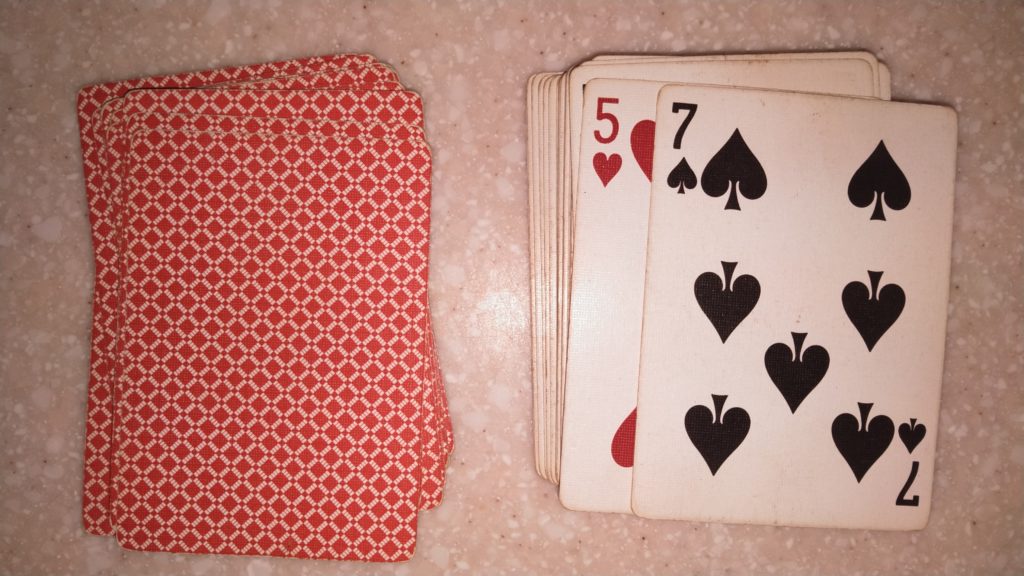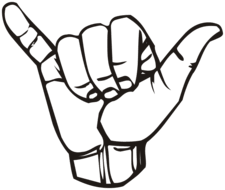
- Encourage participants to share their current emotional state, either by asking how they are feeling or encouraging the use of metaphor. For instance, ask “what is your internal weather forecast?
- Plan/Preview:
- Grab a deck of cards. If playing virtually, either grab a second camera so you can flip cards on your table top or visit https://www.random.org/playing-cards/ and share that screen with the participants.
- Check that participants are familiar with the types of cards in a deck (four suits, numbers 2-10, Jack, Queen, King & Ace).
- Do:
- Explain that each person should predict in turn what the next card in the deck is not. (“The next card is not an ___”) If they are correct (they do not name the card that’s flipped), then the game continues. If they do name the card (value) that is flipped, the round ends.
- Set a realistic goal for the group (make it once around the circle) or ask the group to set a goal.
- Consider allowing participants to “pass”

Share this gesture with participants to allow them to signal agreement without speaking aloud.
- Reflect:
- Ask each participant to share one word describing how they felt when it was their turn (or consider using mentimeter or other online polling system to collect the responses.)
- Ask all participants who felt a particular emotion to raise their hands or do the “same” gesture.
- Ask for a volunteer to share what their body felt like (hot, tight, tired, etc) when they felt the emotion.
- Ask about the consequence of making a mistake. Did the emotion feel bigger than the consequence?
- Consider talking about empathy or growth mindset if the discussion heads that way.
- Apply:
- Encourage participants to journal or share with the large group about a time in their life when they have had a strong emotion and how they got through it. Consider sharing some coping or mindfulness strategies.
- Extend: This activity can be re-framed as a consensus building activity. Instead of asking for individual responses in turn, challenge the group to agree on what the next card is not. For a different challenge, ask participants whether the next card is higher or lower.
